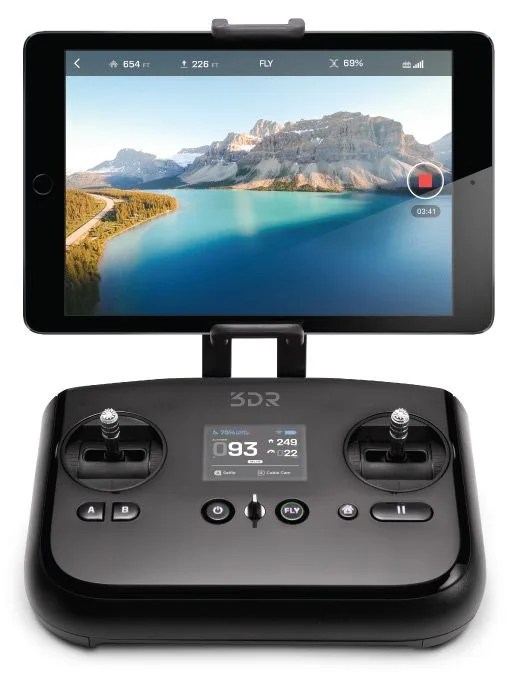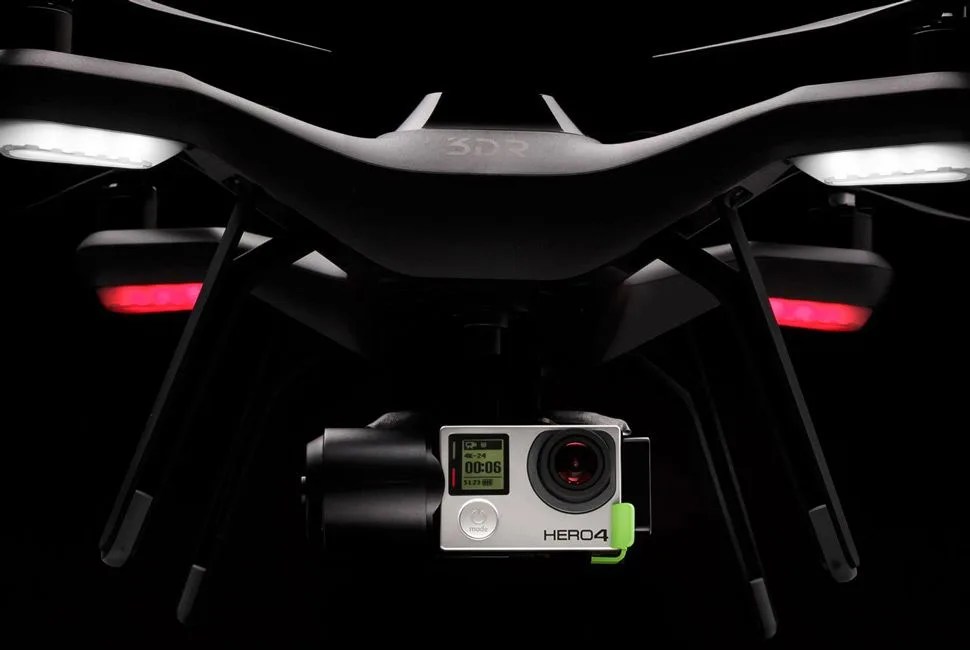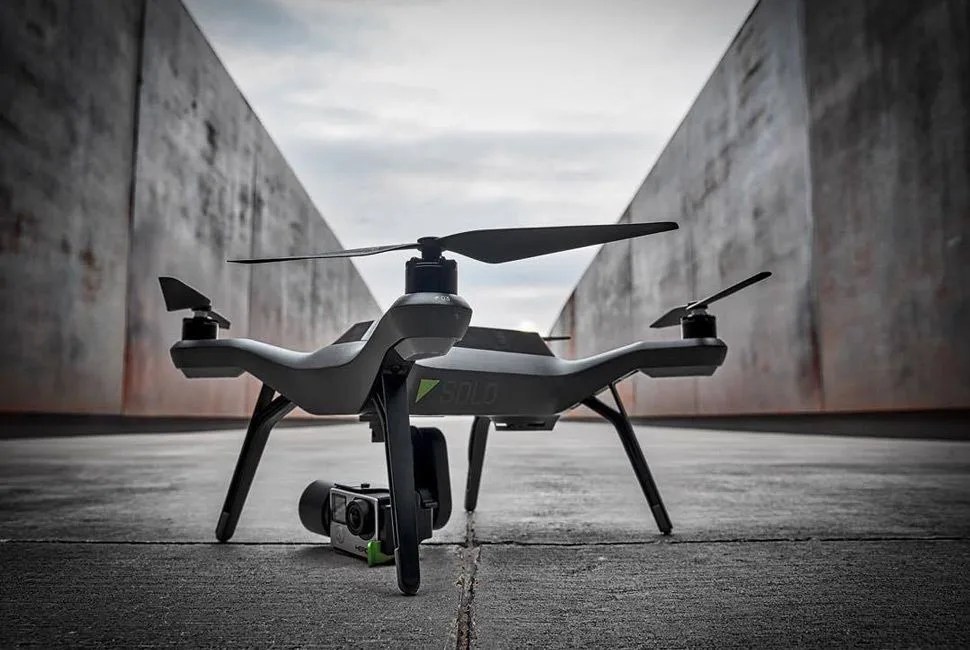4 photos
The drone wars are heating up. ProDrone has deployed its ultra-compact, full-featured, collapsible Byrd quadcopter, Yuneec has a new six-bladed Typhoon H with retractable landing gear, and DJI just announced its Phantom 4, with a slick point-and-track function, obstacle avoidance, and a sport mode that will let you buzz around the block at up to 45 mph.
However, I’m testing the Solo from 3D Robotics — the San Francisco-based company’s current state-of-the-art drone, a product that will remain its oft-updated platform for the foreseeable future. It floats motionless 15 feet off the ground while I walk around, taking pictures of it from below. The transmitter sits on the ground somewhere behind me, but I’m not worried. It’s behaving like a well-practiced figure model. If I ask it to move somewhere, it would. If I ask it to keep its prim pose, it will.
Holding a steady hover is child’s play for today’s drones — any of them can do it. But telling your drone to move somewhere specific while shooting from its gimbal-stabilized camera and having it do it over and over again as much as you like — that’s a different matter. That takes brains, both on-board and in the engineering lab of the company behind it. And Solo’s got brains. Take Cable Cam mode — fly to your desired starting point, tap “A” on the transmitter, fly to your end point, hit “B,” and then just press “Play.” You now have an airborne rail that your drone zips along at whatever speed you choose, the GoPro camera pointing precisely where you want it to, either through pre-aiming or in-flight adjustment. It creates striking, steady, cinematic mini-masterpieces.
Solo is one of the first drones to embrace the fact that a) the only thing most of us really want to do is make great pictures and movies, and b) most of us suck at piloting drones.
This is one of four tricks up the Solo’s “Smart Shots” sleeve. The others include Selfie, where the copter flies out to a prescribed distance and then returns, never once taking its eyes off you; Orbit, in which you’re able to pick a point on an overhead map via the mobile app — your smartphone or tablet sits mounted securely to your transmitter in front of you — and have the drone circle around it; and Follow, in which the drone tags along behind the transmitter / smartphone combo from a distance of up to 500 feet (you can reel it in closer and change the camera angle with a few nudges of the transmitter’s sticks). And though it’s a bit cluttered with data streams from the drone, the app to control these operations is easy to use, provides great high-def video streams from the GoPro, and enables you to work through your programming while the drone hangs steady. (There’s a great, stress-reducing “pause” button that instantly commands the drone to just stay still while you get your act together.)






